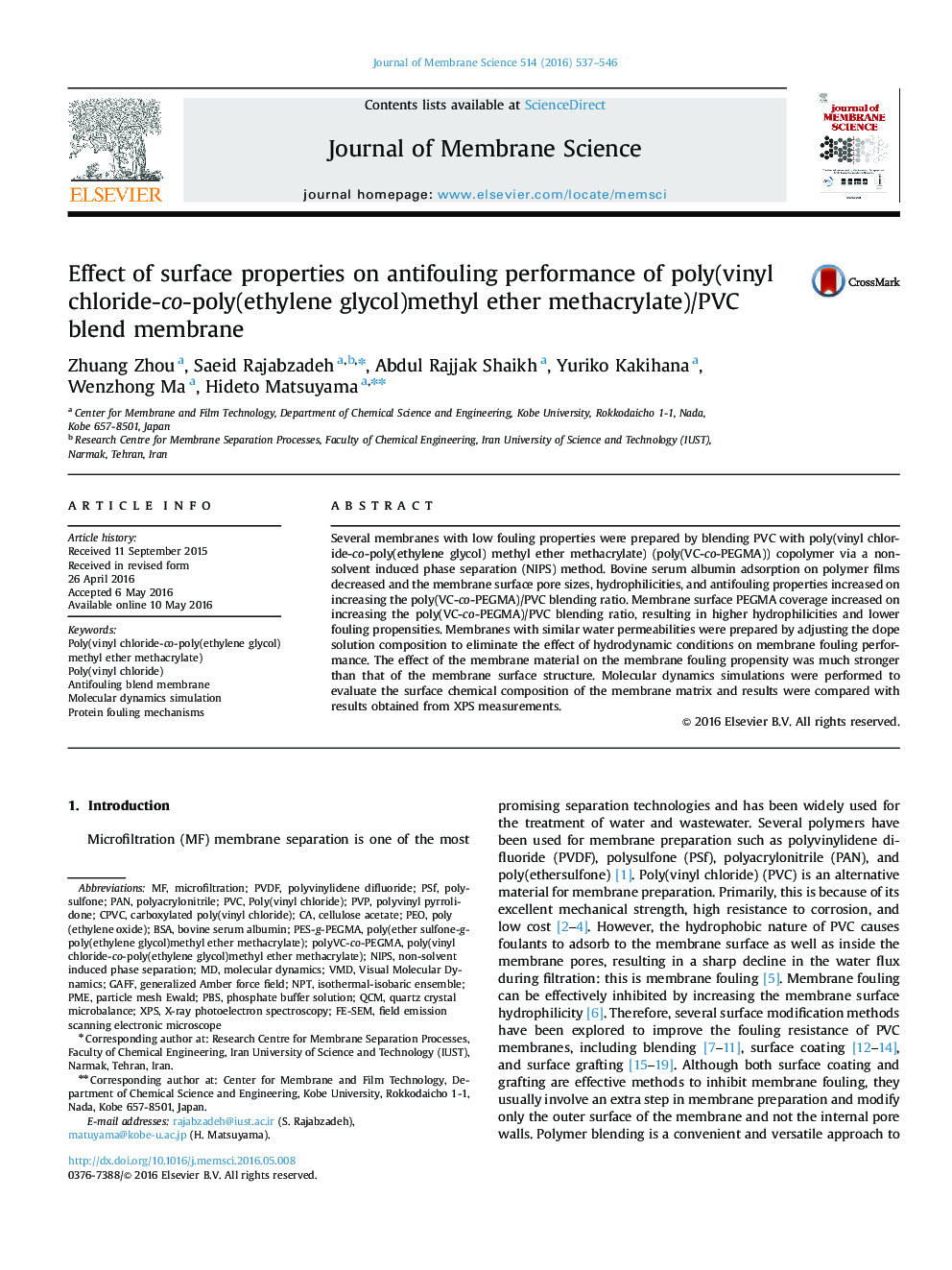| Article ID | Journal | Published Year | Pages | File Type |
|---|---|---|---|---|
| 632308 | Journal of Membrane Science | 2016 | 10 Pages |
•Poly(VC-co-PEGMA)/PVC blend membranes with considerable antifouling properties were prepared.•Effect of poly(VC-co-PEGMA)/PVC blend ratio on antifouling properties was evaluated.•The copolymer distribution in the membrane matrix was determined by MD simulations.
Several membranes with low fouling properties were prepared by blending PVC with poly(vinyl chloride-co-poly(ethylene glycol) methyl ether methacrylate) (poly(VC-co-PEGMA)) copolymer via a non-solvent induced phase separation (NIPS) method. Bovine serum albumin adsorption on polymer films decreased and the membrane surface pore sizes, hydrophilicities, and antifouling properties increased on increasing the poly(VC-co-PEGMA)/PVC blending ratio. Membrane surface PEGMA coverage increased on increasing the poly(VC-co-PEGMA)/PVC blending ratio, resulting in higher hydrophilicities and lower fouling propensities. Membranes with similar water permeabilities were prepared by adjusting the dope solution composition to eliminate the effect of hydrodynamic conditions on membrane fouling performance. The effect of the membrane material on the membrane fouling propensity was much stronger than that of the membrane surface structure. Molecular dynamics simulations were performed to evaluate the surface chemical composition of the membrane matrix and results were compared with results obtained from XPS measurements.
